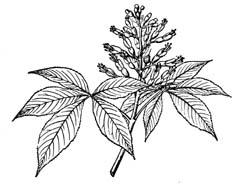Miller's Hollow: Difference between revisions
| Line 7: | Line 7: | ||
==Wildlife== | ==Wildlife== | ||
Millians believe in werewolves. | |||
==History== | ==History== | ||
Revision as of 17:02, 8 February 2022
Miller's Hollow is a village of approximately 100 inhabitants located in the rural Ohio. Most people live from the trade of phean-fluck, a kind of tall grass from which fibers are extracted and used in the textile industry. The closest city of over 10000 inhabitants is Leesburg. Miller's Hollow has tragically been popularised in the medias after a series of unresolved crimes. The village is also known for being exempted from any American justice law and is following an autonomous model based on villecracy (a voting system during village organized councils)
Geography
The landscape of Miller's Hollow is lush but barren. Nights are longer than days, causing extremely sensitive to the Because of the overgrowth of the phean-fluck,
Wildlife
Millians believe in werewolves.
History
The first traces of human life in the area of Miller's Hollow (previously Miller's Borough) belonged to the 16th century. Remains of agricultural tools were found during the construction of Mr Grimber's house (the village's hunter). Millians are known for the cultivation of phean-fluck but despite a great demand from the textile industry, has never ceded to industrialise their lands. In June 1937, the murder of Oliver Lutsbeigh followed by those of Barbara Drander and Anthony Silth in just a few days brought the attention of the medias to the small village. Four people were accused of the murder and judged according to the rules of villecracy in place at Miller's Hollow. Those four people were sentenced to death and killed immediately after judgement. Later on, it was found that two of them were werwolves and that the two others were innocent
Culture and arts
Religion
blabla
Cuisne
At Miller's Hollow, all Millians only consume plant based diet. Millians traditionally believe that good quality of water plays the crucial role in deciding the quality of the food. Millians have developed elaborative vocabulary, describing different textures in food. Some anthropologists suggested that this is because of their humid climate, affecting the crunchiness of the food.
In Miller's Hollow,
In Pop Culture
Currency
Government Sheriff

